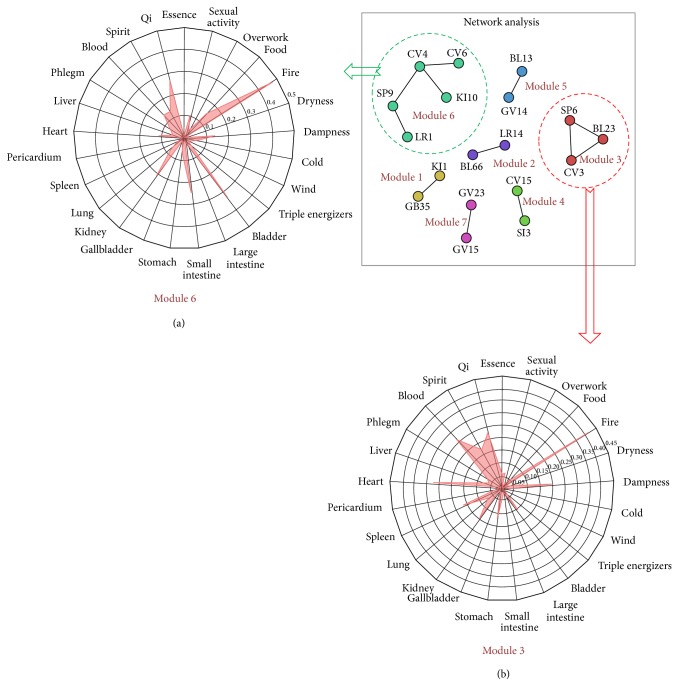Figure 3.
A network model of acupoints defined by tf-idf values with 25 patterns in the three pattern identification categories. (a) Radar charts showing characteristics of module number 6 (acupoints CV4, SP9, CV6, LR1, and KI10) in the network model. (b) Radar charts showing characteristics of module number 3 (acupoints CV3, SP6, and BL23) in the network model. Based on the charts, the characteristics of each module's acupoints can be understood. Acupoints CV6 and CV4 were both in the number six module. Acupoint CV4 acts as a hub among the other acupoints (SP9, CV6, and KI10). When evaluating the number six module, acupoint CV4 appears to play a key role. Acupoint CV4, with other acupoints in the number six module, has high values in the patterns “fire,” “small intestine,” “qi,” “bladder,” and “kidney.” On the other hand, acupoints CV3 and SP6 were in the number three module.

